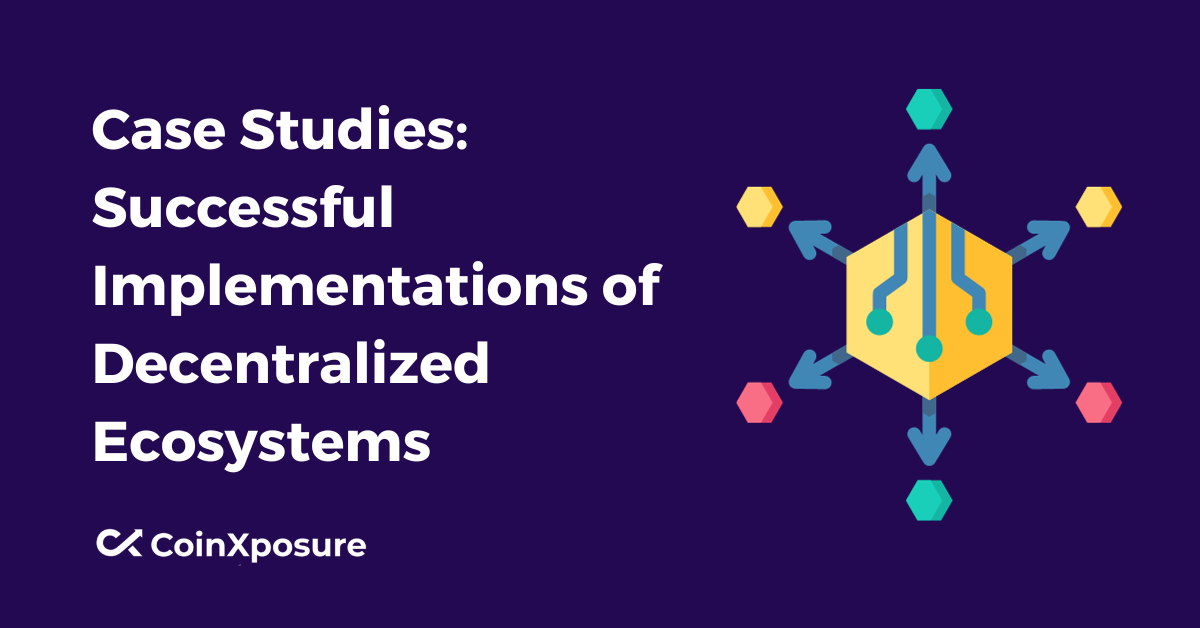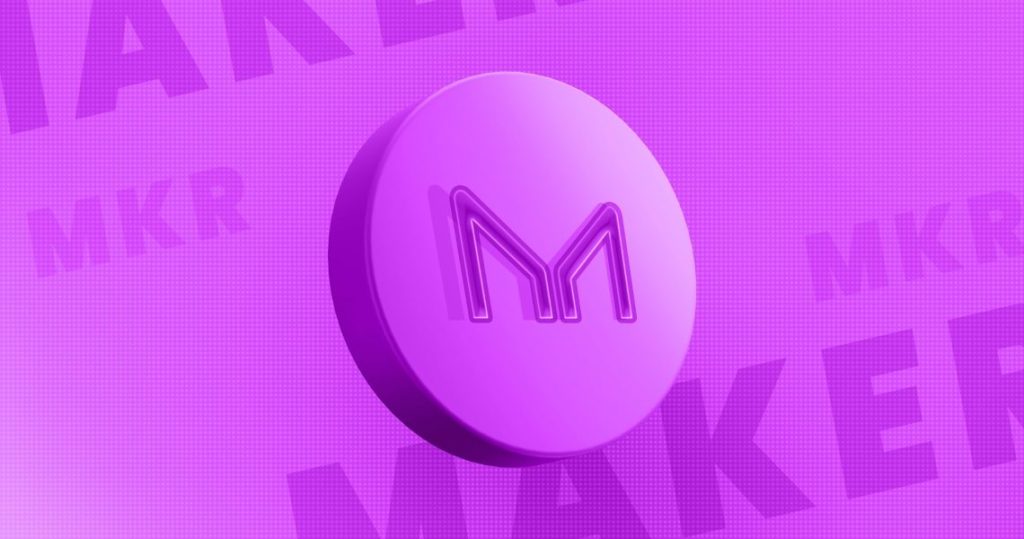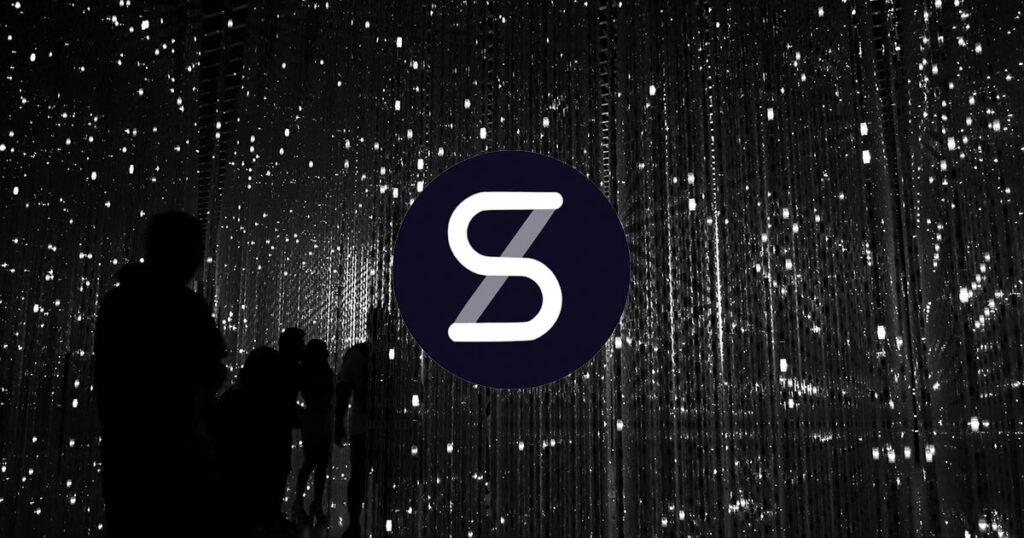
Case Studies: Successful Implementations of Decentralized Ecosystems
The decentralized ecosystem speaks of the components of the world of decentralized finance. This article discusses successful implementations of decentralized ecosystems.
What are Decentralized Ecosystems?
Decentralized ecosystems refer to decentralized exchanges, money markets, stablecoins, cryptocurrencies, and other financial products and services developed through smart contracts and housed within blockchain ecosystems.
The decentralized ecosystem has brought more standard bank functions into cryptos and has made it easier to connect protocols, allowing for the easier implementation of new concepts.
The blockchain platform is global so that it can withstand localized shutdowns or attacks; it is censorship-resistant because no permission is required to join the peer-to-peer network as long as it is operated according to protocol;
it is open-source, so its maintenance and integrity are shared across a network of engineers; and it is distributed, so there is no central server or administrator from whom a large amount of value or information could be stolen.
Each decentralized ecosystem has advantages and disadvantages. Decentralized ecosystems, less prone to failure and more efficient, have significantly advanced over traditional systems.
Successful Implementations of Decentralized Ecosystems
Some successful implementations of decentralized ecosystems are;
- Compound
- MakerDAO
- Synthetix
- Decentralized exchanges
Compound

Compound is one of the successful implementations of decentralized ecosystems. It is a lending protocol that functions as a money market fund in which users earn interest by lending out funds.
It is a famous decentralized ecosystem. Borrowers can access this cash depending on their “borrowing capacity,” which is determined by a pre-programmed algorithm that considers their token balance, market liquidity, exchange rates (via price oracles), and other criteria.
Borrowers are automatically liquidated when the amount of their debt exceeds their borrowing ability.
Finally, Compound and Maker shift banking away from privileged institutions issuing undercollateralized loans to fuel credit development and toward decentralized market forces that overcollateralize assets to increase credit while using automated stops to manage adverse risk.
They minimize market obstacles and processing times for capital access and enable anyone to participate as a lender for passive interest returns.
How Compound Works
In its most basic form, the operation of Compound can be summarized in three points:
- Compound enables you to earn compound interest by contributing assets such as cryptocurrency to its liquidity pool.
- The compound interest rates adjust automatically based on the supply and demand for your specific item.
- There is no lockup period, so the collateral can be withdrawn or paid at any moment.
The deposited funds in Compound are routed to smart contracts, ensuring that the lenders retain control of their assets.
MakerDAO

Another successful implementation of decentralized ecosystems is MakerDAO.
It is a DeFi application that creates and issues credit in the form of DAI (a stablecoin tied to 1USD) and controls the loan process through a decentralized autonomous organization (made up of users who own its governance token MKR), is currently the most popular DeFi application.
Banks in traditional banking are normally permitted to make loans as long as they maintain a specified reserve ratio, which in the United States is 10% for banks with more than $124 million on deposit.
Regardless of regulatory technicalities, the bank must maintain 10% of its deposits in reserve but can lend out the rest.
MakerDAO follows a similar idea, but the process is decentralized, and the reserve ratio is significantly different. Users put their ETH in a smart contract used as collateral to make DAI loans for themselves in MakerDAO.
The collateralization is now roughly 150%, meaning users receive two-thirds of the amount they lock up. For example, if someone deposits $100,000 with E T H, they will receive a 60,000 loan in the form of DAI.
Unlike traditional banking, loans are over-collateralized in this approach, where loans are under-collateralized through fractional reserve banking.
It’s worth noting that Multi-Collateral Dai has recently gone live, allowing users to stake numerous assets other than ETH. The symbol for Multi-Collateral Dai is DAI, while the original single collateral Dai via ETH staking is SAI.
Finally, MakerDAO maintains network decentralization by matching incentives. MKR token holders help to administer the system by voting on interest rates, how much of a loan can be given, and other issues.
Borrowers are compensated for their efforts by paying their interest payments with the MKR token, which is then burned to ensure it grows scarcer over time.
They also earn a percentage of the penalty costs (14%) paid by borrowers when the value of their collateral falls below the liquidation price specified in their smart contract-based loan.
This automatic loan liquidation (caused by price oracles) makes the network solvent by automatically hedging price volatility. When a loan is repaid, the system destroys the DAI/SAI that was previously issued.
The most appealing aspect of MakerDAO’s design is that all users are driven to act in ways that benefit themselves and the network, eliminating the need for a centralized third party.
How MakerDAO Works
One million MKR tokens were made at start to run the Maker protocol.
The people who own these MKR tokens can use a process called “Executive Voting” to have their say on important choices. Once an Executive Vote is passed, the code in the Maker Protocol is changed to reflect the plan that won.
But there must be another kind of vote first before there can be an Executive Vote.
This is known as “Proposal Polling,” and it lets people who own MKR find out how people feel about a plan before making any changes to the protocol.
People who don’t own MKR can cast a third kind of vote through threads in the MakerDAO site.
Anyone can make suggestions to MakerDAO, but only people who own MKR can vote on them. Then, the number of MKR tokens committed to a plan is used to measure a vote.
Ten people who own 1,000 MKR each vote for Proposal A, while five people who own 5,000 MKR each vote for Proposal B. Proposal B wins because more MKR tokens support it.
The number of tokens, not the number of people who own tokens, determines the result of the vote.
Synthetix

Still, on successful implementations of decentralized ecosystems, Synthetix must be included. Synthetix, a derived crypto-backed derivative platform, is a new DeFi Dapp.
Users stake the native token SNX (ETH staking is coming) on Synthetix, which is used as collateral to build debt-based synthetic assets (synths) that reflect fiat currencies, cryptocurrencies, commodities, indices, and more.
These devices provide traders/investors with exposure to the underlying asset’s movement without actually holding the asset.
When synths are switched, their values are tied to the underlying market value of the item utilizing price oracles.
The synthesizers are backed by SNX stakers, who receive a share of the transaction fees. Because there is no order book while shifting between synths, traders on Synthetix can take advantage of endless liquidity.
Instead, users assume a share of the total debt, which can increase or decrease depending on the movement of their synths with the total number of synths in the network.
Every deal is completed against the contract (staked SNX), much like a clearinghouse, which serves as the counterparty to every trade.
Users can hedge against over/under exposure to maintain the system ultimately collateralized while enhancing their underlying position because all positions in the network are transparent to them.
How Synthetix Works
Synths track the values of the assets represented via decentralized oracles, which are smart contract-based price discovery protocols, allowing you to hold and exchange Synths as if you actually owned the underlying assets.
In this way, Synths provide you access to assets that are generally inaccessible to the average crypto investor, such as gold and silver, and allow you to trade them fast and effectively.
Synthetic commodities differ from tokenized commodities like Paxos’ PAX Gold (PAXG), which is backed by gold bars.
Having PAXG means you own the underlying gold and Paxos holds it for you, whereas having sXAU from Synthetix means you don’t own the underlying asset and instead have exposure to the price of gold.
Because Synths are based on Ethereum, you may use them to provide liquidity and earn interest on other DeFi platforms such as Curve and Uniswap.
Synthetics and derivatives play a significant role in the development of mature markets, or markets that have attained equilibrium, by easing price discovery and assisting in volatility hedging.
Decentralized Exchanges

Decentralized exchanges can also be termed a successful way decentralized ecosystems were implemented.
Decentralized exchanges provide non-custodial platforms for exchanging assets, censorship-resistant trading, and other security guarantees, such as storing private keys rather than having a centralized exchange handle them.
Furthermore, protocols such as 0x enable Dapps to integrate a customized DEX into their application, bZx enables liquidity for margin trading on DEXs by coordinating non-custodial lending across platforms, and Loopring is working on scalability and privacy for DEXs via off-chain computation and zkRollups.
Chainlink has just integrated with Loopring to ensure that relayers stake the necessary amount of LRC when doing a zero-knowledge proof on-chain.
How Decentralized Exchanges Work
Given that decentralized exchanges are built on blockchain networks that allow smart contracts and where users retain custody of their cash, each trade incurs a transaction cost in addition to the trading fee.
To use DEXs, traders interact with smart contracts on the blockchain.
Decentralized exchanges are classified into three types: automated market makers, order books DEXs, and DEX aggregators.
Through their smart contracts, all of them enable users to trade directly with one another.
The initial decentralized exchanges, like centralized exchanges, employed the same type of order books.
Final Thoughts
The decentralized ecosystem is expanding worldwide as technology has made it more affordable.
Governments, banks, and other financial institutions have begun to recognize the value of DeFi solutions and believe that various DeFi projects have the potential to become the next big thing, attracting hordes of new users by making financial applications more inclusive and accessible to those who have traditionally not had access to such platforms.
